Like any other thing Steak has a rich history, and a lot to offer to the steak lovers. The purpose of this blog is to walk you through all you need to know about steak!
History of Steak
Steak, a thick cut of meat sliced from the muscle of an animal, has a rich history that dates back to the mid-15th century. However, the steakhouse was first opened properly in New York City in 1887 and from there a new dining experience began to emerge. Since then, the popularity of steak has continued to grow, with many countries producing high-quality beef, including the United States, Brazil, China, Japan, Australia, Argentina, and several European countries.
While steak is often associated with beef, it can also be made with chicken or other meats, depending on people’s preferences. The types and shapes of steak are also varied, and they can be cooked in numerous ways to achieve different flavors and textures.
For steak lovers, finding the perfect cut of meat and accompaniments is essential, even if it comes at an expensive cost. Nowadays, numerous steakhouses cater to these preferences and offer a wide range of options to satisfy customers’ cravings.
In this blog, we will explore the various types of steak and how to rank the best steak recipe, taking into account factors such as the cut, seasoning, cooking method, and presentation. Whether you are a seasoned steak connoisseur or a newcomer to the world of steak, this blog will provide valuable insights into what makes a great steak and where to find it!
Types of Steak
1. Filet Mignon or Tenderloin
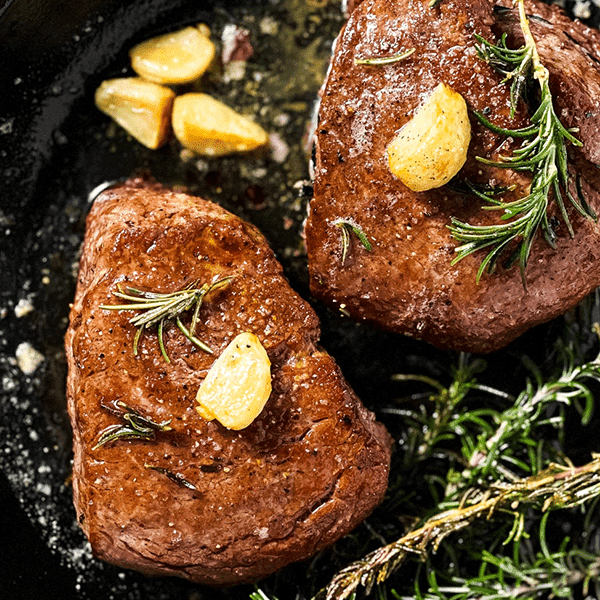
Filet mignon also known as tenderloin & eye filet refers to thick slices taken from the tenderloin or eye filet. This type of steak is quite difficult from butcher to steak because of its thick-sliced cut, It should be cut very carefully to be cooked as perfect steak. It is also the most expensive cut of Steak. Usually cooked as grilling & broiling.
This luxurious cut is known for being incredibly tender when cooked correctly (medium rare) plus boasting an amazing buttery texture too which makes it feel extra special indeed!
2. Sirloin
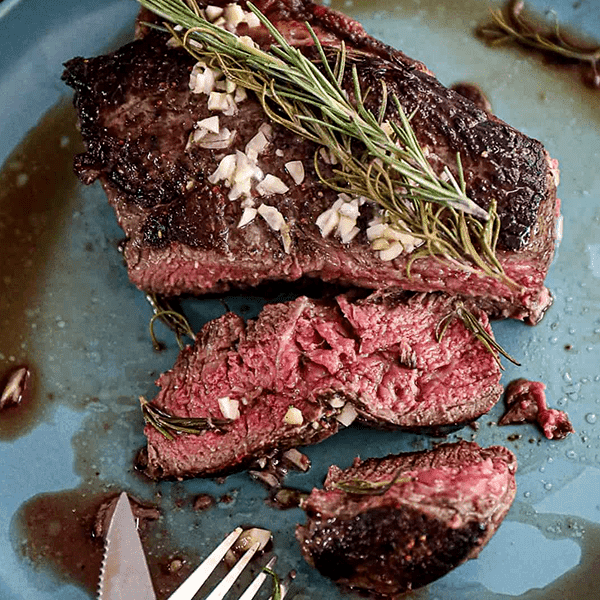
Sirloin cut comes from the top of the cow’s back. This cut is a leaner cut with great flavour but not as much marbling as other cuts like ribeye or strip steak. It’s usually best-cooked medium-rare for maximum tenderness and juiciness.
3. T-Bone
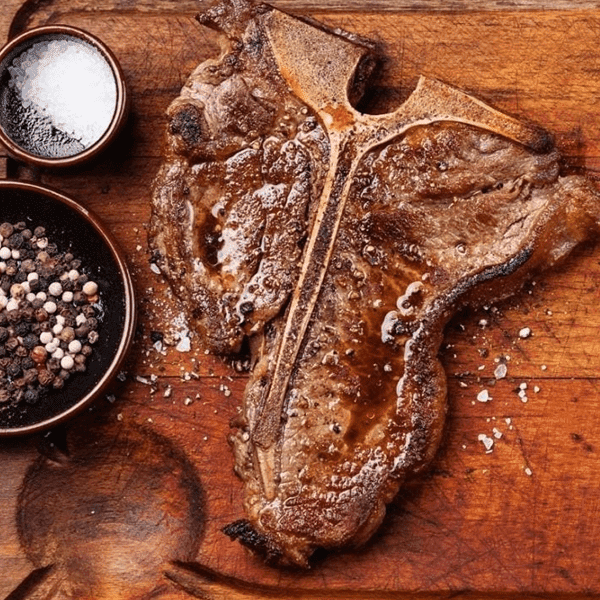
The T Bone is another classic favorite; this large piece of meat features both New York Strip on one side of the bone along with Filet Mignon on the other side – making it an ideal choice for those who want both flavors in one bite, It’s perfect on oven baking or grilling!
4. Ribeye
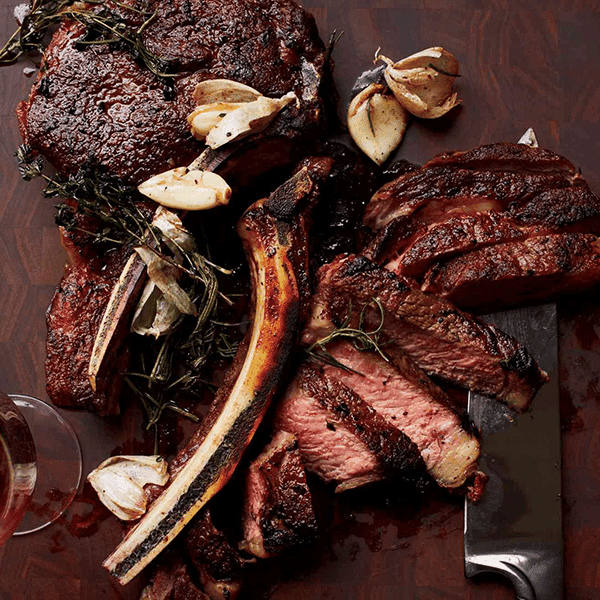
This piece of meat comes from cow ribs, carrying fine lines of fat on it, one of the fattiest of the lot loaded with marbling, and also the tastiest of all steak cuts. In some countries, Ribeye is also known as spencer cut, beauty steak, Scotch filet, or Delmonico steak. No matter how you cook this cut, it will remain juicy. Ribeye has become increasingly popular over recent years due to its intense beefy flavor combined with ample amounts of marbling throughout – resulting in juicy yet tender slices every time you try them out!
5. Skirt Steak
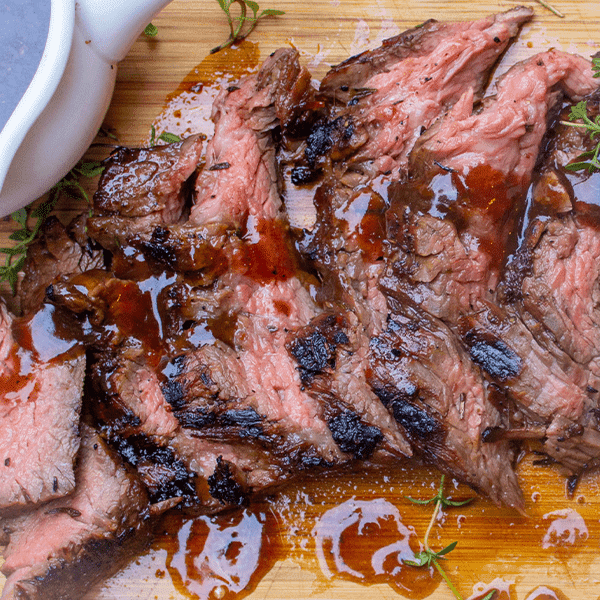
Skirt steak is an incredibly versatile cut of beef yet inexpensive that can be used in a variety of dishes like pizzas, sandwiches, burgers, and other meals. Its robust flavor and tender texture make it perfect for grilling, pan-frying, or stir-frying. Skirt steak is also ideal for marinating as the thin layers absorb flavors well and cook quickly. When cooked correctly, skirt steak offers a juicy bite with plenty of flavors – making it an excellent choice for any meal!
6. Flank Steak
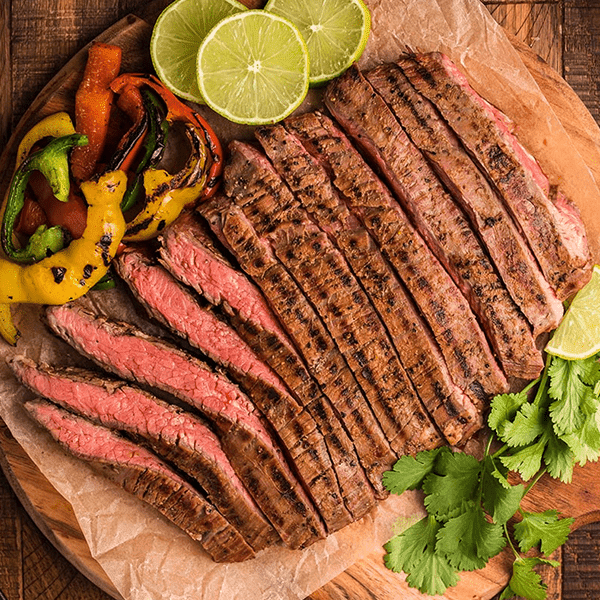
Flank steak is part of a cow’s abdomen, this cut is long and flat in shape. Try not to overcook this cut, otherwise, it will get dry and tough. Cook in medium and slice it very thinly if you want to enjoy it in the best way. Also, Flank Steak offers more flavor than skirt steak but less fat content compared to Ribeyes – perfect if you’re looking for something light yet still packed with full taste!
No matter what type of steak your craving, these five options should give you plenty ideas next time your grilling up dinner outside or cooking indoor.
Steak has multiple methods of cooking
- Steak grilling
- Pan Frying
- Broiling
- Over Roasting
However, the most traditional way of cooking steak is grilling, which can be done on an open flame or hot coals.
Here is: Best way to eat steak with fork and knife
Doneness of a Steak
1. Rare
When meat is cooked rare, the outer layer is seared and cooked, but the inside remains mostly red, soft, and partially raw. This results in the center of the meat being slightly cool compared to other levels of doneness. The internal temperature of the meat will range between 125 and 130 degrees.
2. Medium Rare
Meat cooked to medium rare has a seared and cooked outer layer with a slightly higher internal temperature than rare. The inside of the meat is approximately half red and half pink, with a slightly firmer texture than rare. The internal temperature will range between 130 and 140 degrees.
3. Medium
Medium doneness refers to a cooking method in which the exterior of the food is seared and cooked through, while the interior retains a slightly pink color and firm texture. The recommended internal temperature for medium doneness is between (60 to 65 degrees Celsius).
4. Medium Well
A medium-well steak has been cooked for a longer period than a medium steak and has a firmer texture. The outside of the steak is seared and browned, and the interior of the steak is mostly cooked, with only a slight hint of pink in the center. The internal temperature of a medium-well steak is between 150 and 155 degrees.
5. Well Done
A well-done steak is typically cooked until it has a seared outer crust and is completely cooked through. It should have no visible pink or red in the center. The internal temperature of a well-done steak is between 160–170°F (70–75°C).
However, It is generally believed that medium-rare beef – with an internal temperature of 130-135F (55-57C) – is the best way to accentuate the flavor and retain moisture.
Did you know? What is Blue, Black & Rare Steak?
Some Instructions for a good steak:
Here are some tips for making a good steak:
- Before cooking, remove the steaks from the refrigerator and let them sit at room temperature for about 30 minutes.
- Make sure the steaks are well-seasoned on both sides with salt and pepper. Herbs and butter can also be added to the steaks for additional seasoning.
- Depending on your preference, you can grill or use a cast-iron skillet.
- For medium-rare steaks, cook for approximately 3-4 minutes per side or until the desired doneness is reached on the grill or skillet.
- Remove the steaks from the heat and let them rest for about 5 minutes before slicing and serving.
How to Season a Steak?
Steak Can be served with different seasonings to add flavors to steak. Here are some common ones:
1. Mashed Potatoes
Steak can be served with mashed potatoes and seasoned vegetables. Mashed potatoes are a classic side dish that pairs well with many types of meat, including steak.
2. Vegetables & Herbs
Vegetables seasoned with herbs and spices can also be a great accompaniment to steak, providing a balance of flavors and textures to the meal. Some popular vegetable options for serving with steak include roasted asparagus, mushrooms, and grilled zucchini. Ultimately, the choice of side dishes will depend on personal preference and the specific type of steak being served.
3. Salt and Pepper
Simple yet classic, a sprinkle of salt and freshly cracked black pepper can go a long way in enhancing the natural flavor of the steak.
4. Garlic and Herb
A blend of minced garlic, rosemary, thyme, and parsley can add a fragrant and earthy taste to the steak.
5. Chimichurri
A South American sauce made with fresh parsley, cilantro, garlic, and red pepper flakes, chimichurri adds a tangy and herbaceous flavor to the steak.
6. Teriyaki
A Japanese marinade made with soy sauce, brown sugar, garlic, and ginger, teriyaki sauce can add a sweet and savory taste to the steak.
7. Cajun
A mix of spices including paprika, cayenne pepper, garlic powder, and onion powder, Cajun seasoning can add a bit of heat and smokiness to the steak.
8. Curry
A blend of spices such as cumin, coriander, turmeric, and ginger, curry powder can add a bold and exotic flavor to the steak.
9. Herb Butter
A mixture of butter and chopped herbs like thyme, rosemary, and parsley, herb butter can add a rich and creamy flavor to the steak.
10. Lemon & Pepper
A blend of lemon zest, black pepper, and salt, lemon pepper seasoning can add a zesty and bright taste to the steak.
FAQs
1. What is the best type of steak?
The fillet steak, also known as Filet Mignon, is widely considered to be the most superior cut of beef. This highly sought-after cut comes from the lower back of the cow, an area that is rarely used, resulting in an exceptionally tender steak.
2. What are the grades of steak?
- Rare
- Medium Rare
- Medium
- Medium Well
- Well Done
3. How to order steak like a pro?
Know your cuts: Different cuts of steak have different flavors and textures. Some most tender cuts of steak include ribeye, filet mignon, New York strip, and T-bone. Research the different cuts and find one that suits your taste preferences.
4. What are the best steakhouses in Pakistan?
Well, in Pakistan there are various good steak houses now but here are a few you must try.
- Steak by CFU- Islamabad/ Karachi
- El Momento – Lahore & Islamabad
- American Steak House- Islamabad
- Ox & Grill- Islamabad
- Gauchos Steak House- Lahore
Conclusion:
Steak has a rich history and continues to be a popular choice among meat lovers worldwide. With so many types of steak available, it can be challenging to know which cut to choose and how to cook it. In this blog, we have explored the different types of steak, from the luxurious Filet Mignon to the versatile skirt steak, and provided tips on how to cook them to perfection. We have also discussed the different levels of doneness and their corresponding internal temperatures. Whether you prefer your steak rare or well-done, there is a cut and cooking method to suit your tastes. So, whether you’re a seasoned steak connoisseur or a newcomer to the world of steak, we hope this blog has provided valuable insights into what makes a great steak and where to find it.

